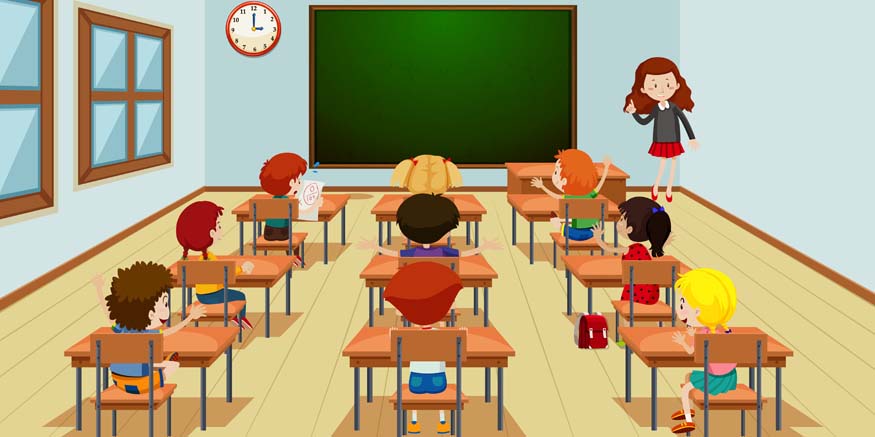Classroom Teaching Aids: Make Learning Fun and Effective

Imagine – if you will – a classroom with no blackboard or whiteboard. There are no pictures or charts on the walls, and the room has no scientific models or artwork. It’s not a place you would call a healthy and exciting learning environment, is it? This is why teaching aids are so important to an enriching learning experience.
Teaching aids like charts, pictures, songs and interactive models make learning fun and interactive. Teaching aids are tools that teachers use to demonstrate and explain concepts better, and make the process of learning more effective.
As a parent, exploring teaching aids and understanding what they aim to do can be vital to deciphering if your child is getting the sort of learning they need. In this blog, we explore the meaning of teaching aids, what they aim to do, and how they benefit a child’s learning journey.
Types of Classroom Teaching Aids
Teachers use different types of classroom teaching aids – audio, visual, and tactile. With the proliferation of ed-tech today, teachers also have many interactive aids at their disposal. The five main types of teaching aids are:
- Visual Aids
- Audio Aids
- Tactile Aids
- Digital Aids
- Real-life Aids
- Making Learning Interesting
- Simplifying Complex Ideas
- Improving Memory
- Encouraging Different Learning Styles
- Encouraging Creativity
Visual aids are teaching aids that can be seen and read. These include posters, diagrams, and colourful drawings. The old adage that a picture paints a thousand words is true – it is much easier to experience colours, shapes, letters and numbers by seeing them. Visual aids are the most commonly used classroom teaching aids.
The act of hearing something creates an emotional response within us, and builds powerful memories related to those particular sounds. This is why audio teaching aids are so effective. Audio recordings and music help kids understand and memorise concepts more quickly and efficiently. For example, playschool and Kindergarten students are always taught rhymes and songs as a means of learning. Audio aids leverage the high recallability of music and rhythm to help memorisation and create a joyful atmosphere for learning.
Tactile aids are models or objects that one can touch and feel. This enhances the learning process by incorporating hands-on experience to help understand and memorise complex information.
With digital learning becoming such a major part of the learning process, interactive aids have grown in importance and scale. These include educational apps, games, and quizzes which act as digital aids to learning. It is now even possible to chart your own learning path through interactive and personalised learning apps.
Despite the rise of digital teaching aids, real-life aids have not lost their importance. These include real-life objects or tools that can help us learn. For example, every school takes students on field trips and educational trips. Real-life places like zoos and gardens can often teach students more than any video or interactive quiz.
How Teaching Aids Benefit Learning Journeys
Teaching aids help to enhance learning experiences by reinforcing information and complex concepts through sensory and experiential learning. This helps in long-term memorisation, and conceptual learning.
Teaching aids are a good way of engaging the mind and the body. Your child is not just sitting in the classroom listening to a teacher, but is actively involved in the learning process. Classroom teaching aids include maps, posters, videos, and audio clips.
When teaching aids are used by the teacher, students learn to look at concepts as puzzles to be solved. Through teaching aids, complex and abstract concepts can be easily visualised and understood.
Teaching aids like visual maps and charts help students categorise and memorise concepts better. Audio and tactile aids help in engaging multiple senses during the learning process, which also boosts memory retention.
Children learn in different ways and at different paces. Traditional teaching methods were designed to meet the need of teaching large numbers of children within a single classroom. This left little or no room to cater to individual learning styles. By using a combination of different teaching aids, it is now possible for teachers to bridge these gaps, making the classroom a more inclusive and encouraging place for all the students.
When students are involved in the learning process, they can show their creativity more effectively. Enabling students to learn at their own pace and to give feedback on the learning process can teach educators and parents more about the learning process.
Classroom teaching aids have gained immense importance through the years. Students are no longer mere receivers of information. Instead, they are active participants in their own learning process.
At Billabong High International School, we believe in creating an environment for our students where holistic learning and development is a part of everyday school life. To learn more about our integrated curriculum, visit our website or contact our admissions office today.













